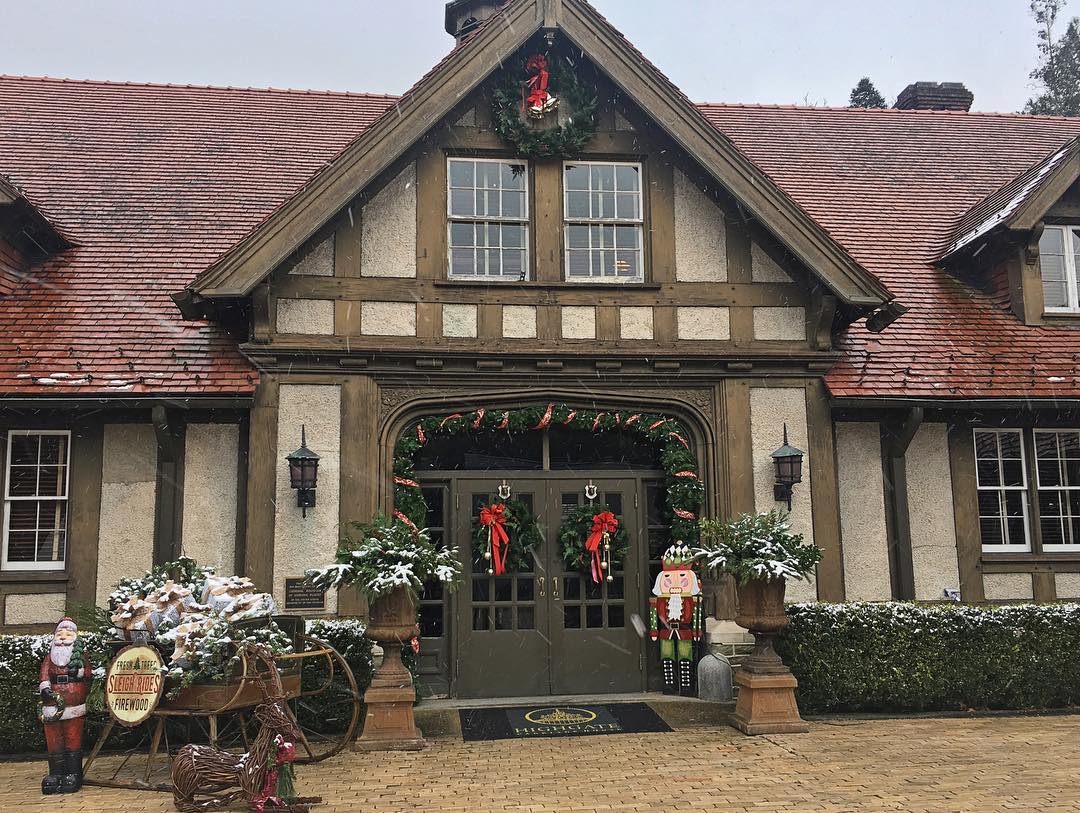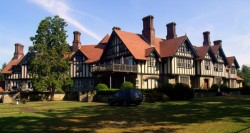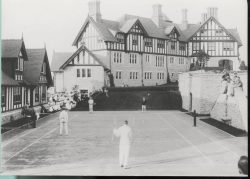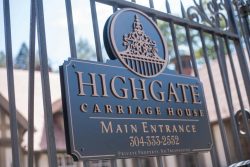History of High Gate Carriage House
September 24, 2020
Built by James Edwin Watson in 1910-1913 at the height of a local economic boom, High Gate was named for the magnificent iron gates and fence surrounding the immense, multi-gabled mansion along with its carriage house and gardens. James E. Watson, Fairmont industrialist, and financier was the son of the “father of the West Virginia coal industry,” James O. Watson.
A vestige of a more gracious, elegant era, the estate is an architectural gem. Mr. Watson not only chose the Tudor Revival style for his home, but he also chose to build High Gate in his native city, a notable exception to the rule among other coal magnates. Watson’s choice of Gilded Age architect Horace Trumbauer (1869-1938) was significant.
Changing of the guard
In 1920s, High Gate passed from the Watson family’s ownership to begin its journey through several owners and lives, ranging from the Sisters of St. Joseph’s Order to the Mansion’s current use as a funeral home. Eventually, the ownership of the Carriage House and Gardens was different than that of the Mansion, and in the latter part of the 1980s, the future looked bleak for the Carriage House and its grounds.
Once home to social events such as the Tiffany Cup tennis tournament and host to distinguished visitors such as President Taft in its heyday, the structure of nearly 10,000 square feet, originally with heated stables, actually housed a nursing home a generation after housing the Watson horses and stable hands.
Friends of High Gate, a non-profit organization, was formed in 1989 by a group of concerned individuals striving to save the Carriage House and Gardens of High Gate from the purchase by a fast-food franchise with plans to demolish the structure to make way for a drive-in restaurant.
With congressional support, Friends of High Gate were able to fend off the impending purchase of the Carriage House and to secure emergency assistance from the National Trust for Historic Preservation. On December 12, 1990, Friends of High Gate purchased the Carriage House and grounds with funds from public, private, and corporate donations along with financial assistance through a loan from the National Trust.
The first floor was rehabilitated for adaptive reuse and the exterior restored, and in the 1990s High Gate Carriage House became a multi-purpose facility housing regional cultural and historical exhibits, educational classes, workshops for adults and children, in addition to providing a new local venue- – and one of the few historic properties available – for community and social use.
In 2002, the Vandalia Heritage Foundation partnered with Friends of High Gate, to ensure continued preservation and restoration of the Carriage House and Gardens. After acquiring the property from FOHG, Vandalia contributed to its viability by renovating the second floor of the building, currently utilized for office space.
The main house is now home to Ross Funeral Home.
New owner
Currently owned by Cheri Satterfield, High Gate Carriage House has undergone extensive enhancements to the grounds and exterior of the structure, including landscaping, benches, fountains, and other architectural elements preserving a significant National Historic Landmark in West Virginia’s history, and an important moment in the local history of Fairmont.
High Gate has become a beautiful venue for community endeavors and social events such as weddings, parties, public meetings, and art exhibits.
A little Watson Family trivia: Carolina and Idamay, unincorporated communities in Marion County, were established around 1914 by the Consolidation Coal Company. Both towns are named after the daughters of James O. Watson.




